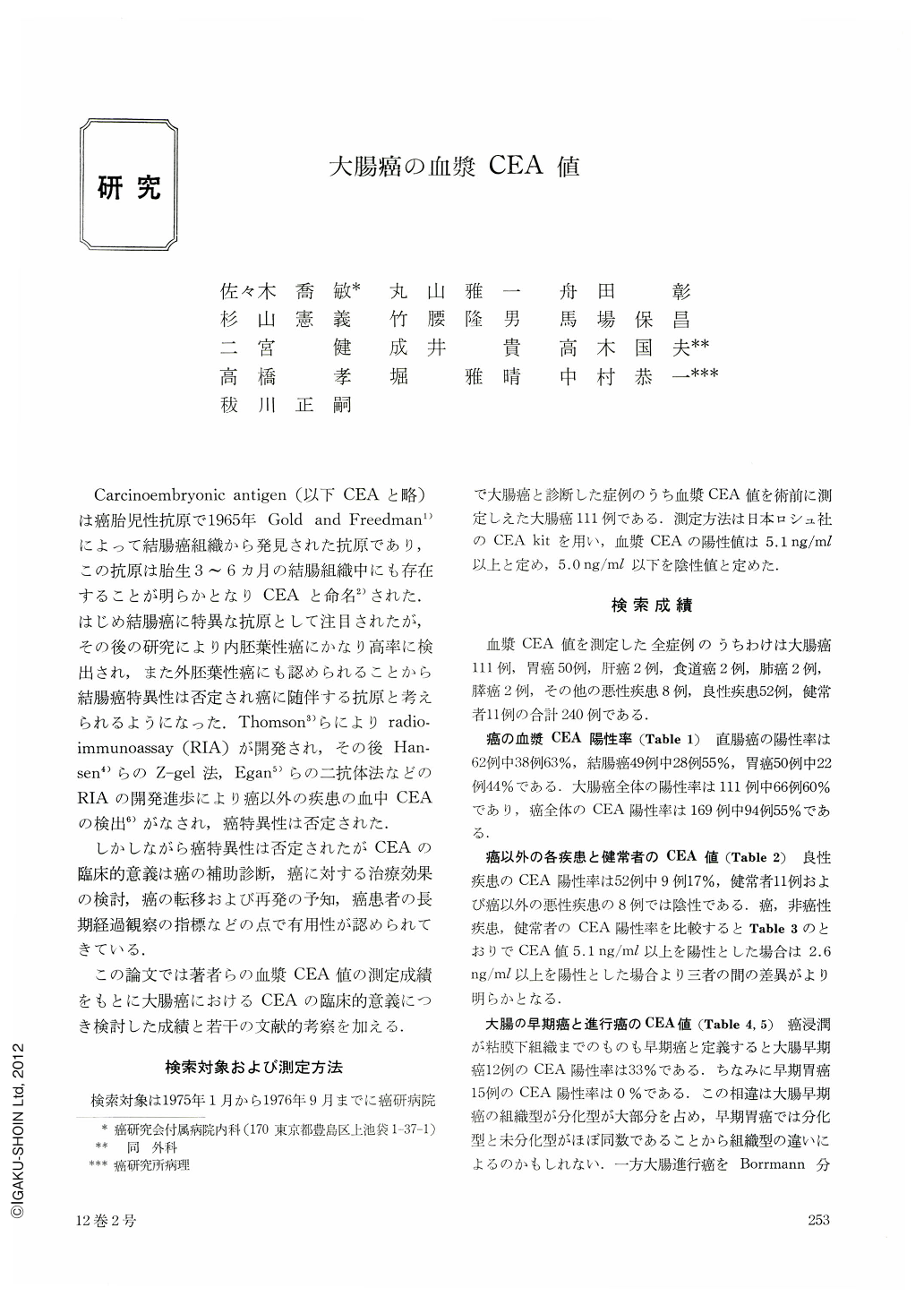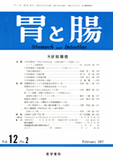Japanese
English
- 有料閲覧
- Abstract 文献概要
- 1ページ目 Look Inside
Carcinoembryonic antigen(以下CEAと略)は癌胎児性抗原で1965年Gold and Freedman1)によって結腸癌組織から発見された抗原であり,この抗原は胎生3~6カ月の結腸組織中にも存在することが明らかとなりCEAと命名2)された.はじめ結腸癌に特異な抗原として注目されたが,その後の研究により内胚葉性癌にかなり高率に検出され,また外胚葉性癌にも認められることから結腸癌特異性は否定され癌に随伴する抗原と考えられるようになった.Thomson3)らによりradioimmunoassay(RIA)が開発され,その後Hansen4)らのZ-gel法,Egan5)らの二抗体法などのRIAの開発進歩により癌以外の疾患の血中CEAの検出6)がなされ,癌特異性は否定された.
しかしながら癌特異性は否定されたがCEAの臨床的意義は癌の補助診断,癌に対する治療効果の検討,癌の転移および再発の予知,癌患者の長期経過観察の指標などの点で有用性が認められてきている.
From Jan. 1975 to Sep. 1976, at Cancer Institute Hospital plasma CEA levels in 111 patients with colorectal cancer, in 58 patients with other various cancer, in 60 patients with non-cancerous diseases and 11 healthy individuals were assayed by Roche CEA kits and following results were obtained. CEA levels greater than 5.1 ng/ml of plasma were considered positive.
Based on the above criteria, the CEA positivity was 55% in cancer diseases, 17% in non-cancerous diseases and 0% in healthy individuals. It was positive in 66 out of 111 patients with colorectal cancer. The CEA positivity in advanced cases of colorectal cancer was high (64%) and low (33%) in early cancer cases.
The threshold value of 5.0 ng/ml instead of 2.5 ng/ml made the difference clear between cancer diseases and non-cancerous diseases. Though, a level of 5.1 ng/ml or greater would be highly suspicious of malignancy.
Left side colon lesions showed higher CEA positivity than right side lesions. The CEA positivity in patients according to Duke's classification were: Duke's A 39%, Duke's B 55%, Duke's C 66% and Duke's D 85%. Positivity is lower in patients with less advanced local lesions (Duke's A and B) than those which spread to regional nodes (Duke's C) and had distant metastasis (Duke's D). The CEA levels were higher in large tumors more than 4 cm in the largest diameter. These data show a correlation existing between plasma CEA levels and the size and extent of the tumor.
After curative operations the CEA levels usually fell to 5.0 ng/ml or less but in non-curative operations, they were elevated or remained on the same levels as before the operation. Pre- and post-operative CEA determinations were important in assessing the effectiveness of surgery.
Twelve of 17 cases in colorectal cancer with liver metastasis showed the CEA levels elevated higher than 20.1 ng/ml. Pre-operative CEA levels have been shown to give an useful guide to the presence of metastatic disease and ultimately to a poor prognosis if the plasma CEA levels were 20.1 ng/ml or more.
In our series, of 39 patients who had a curative colorectal cancer operation, the only case of recurrence was detected by serial CEA assays before it was otherwise detectable. So serial CEA determinations postoperatively help detect recurrent colorectal cancer in asymptomatic patients. Repeated checking of CEA levels is thought to be valuable as a prognostic indicator for clinical courses of cancer patients.
We wish to thank Nippon Roche Company for the supply of CEA kits.

Copyright © 1977, Igaku-Shoin Ltd. All rights reserved.


